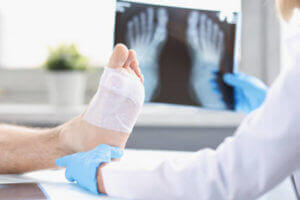
Surgeries, especially podiatric and orthopedic surgeries, are impossible without screws. A surgical screw is a long cylinder with spiral threads on its outer surface.
Surgical screws, either themselves or in synchrony with other devices, are most commonly used to attach implants to bone, bone-to-bone fixation, or soft tissue fixation and anchorage. Some screws are meant to stay in the body forever, while others must be removed.
If you have a fracture of the foot, ankle, or other related part and your podiatrist told you that he/she would use screws to hold the broken things in place, you may want to know how the podiatrist will prevent the screws from damaging surrounding tissues.
Let’s talk about how your podiatrist will ensure the surgical screws do not damage the surrounding tissues and where you can find the best podiatrists in West Orange, NJ.
Preoperative Planning
There is no surprise that all the surgeons (and podiatrists) plan and prepare for the surgery beforehand. They use medical imaging technologies, like X-rays, to take multiple photographs of the damaged area to devise their surgical approach.
Podiatrists understand the position and angle at which they need to place the screws to minimize damage to the surrounding soft tissues. They also possess manual dexterity (the ability to use hands and fingers with precision effectively), which is crucial to perform delicate procedures like foot and ankle surgery.
Before the surgery, they also determine the screw manufacturer, screw type, screw material, screw head recess geometry, and screw measurements so that there are no later complications related to the screw.
Should the patient be allergic or sensitive to a particular metal, podiatrists make sure that screw is made of a material that does not trigger metal sensitivity in patients.
What If There Is a Damage to Surrounding Tissues?
Intense pain, redness, warmth, irritation, and infection at the site where the surgical screw was placed indicates that either the screw has broken/damaged/loose and the broken/loose part has damaged the surrounding soft tissues, or the support provided by the screw has eventually become insufficient.
In such cases, the podiatrist may remove the screws and use an alternative approach to provide you relief.
It is pertinent to mention here that removing the screw also requires surgery with its own risks, including infection.
Podiatrist in West Orange, NJ
Foot and ankle surgeries can sometimes fail due to various factors, and reconstructive surgery is a common and effective treatment option for such conditions.
At Hudson MD Group, we offer a comprehensive range of podiatry services as well as primary care services to help you stay on top of your health. Our podiatrist not only performs delicate podiatry surgeries with great care to avoid surrounding tissue damage but also can correct mistakes from one or more previous surgeries to provide you lasting relief and sustainable outcomes.
If you would like to make an appointment with us, call us today at (973) 705-4914 or fill out our online appointment request form.


